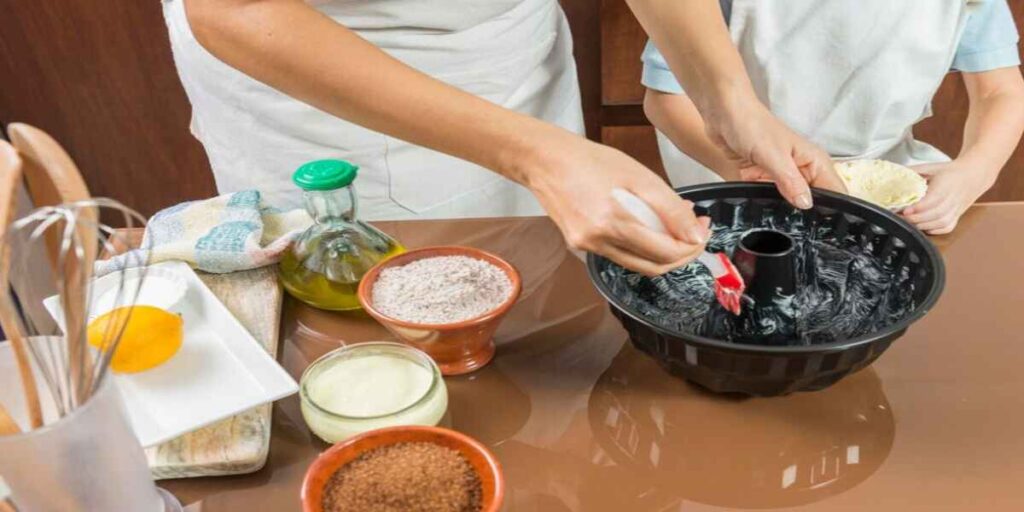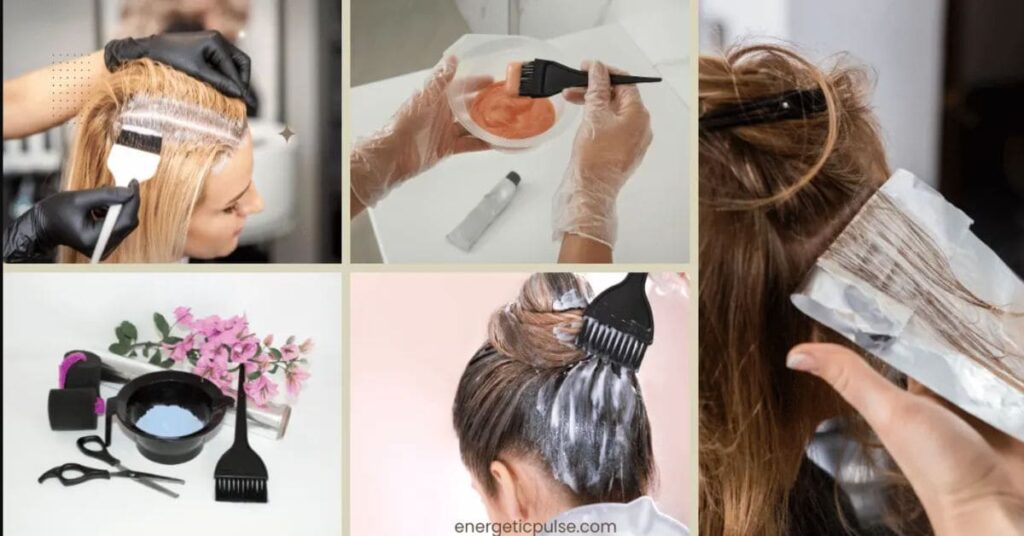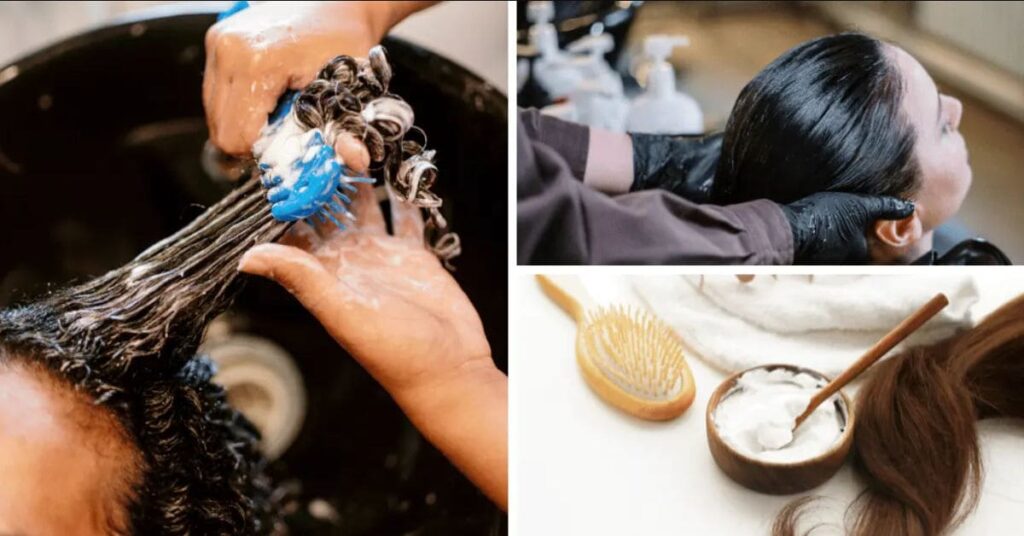In recent years, the cosmetic industry has witnessed a surge in concerns regarding the safety of chemical hair dyes. Traditional dyes often contain harsh chemicals like ammonia, parabens, and peroxide, which can cause adverse reactions such as skin irritation, allergic responses, and even long-term damage to hair structure. This growing awareness has prompted a shift towards natural alternatives that offer vibrant results without compromising health.
Options for Natural Hair Coloring

Choosing natural ingredients for hair coloring offers a spectrum of benefits, ranging from avoiding potentially harmful chemicals to nourishing and enhancing the overall health of your hair.
Carrot Juice
Carrot juice, rich in beta-carotene, not only imparts a warm, orange hue to the hair but also provides essential nutrients like Vitamin A. This natural ingredient helps promote hair health, leaving it shiny and vibrant.
Beet Juice
Beet juice is renowned for adding stunning red tones to hair. Beyond its coloring properties, beet juice contains antioxidants, which contribute to overall hair health by protecting against free radicals and environmental damage.
Henna
Henna, a natural dye derived from the leaves of the Lawsonia inermis plant, has been used for centuries. It not only imparts a reddish-brown tint but also conditions the hair, making it an excellent choice for those seeking both color and improved hair texture.
Lemon Juice
Lemon juice serves as a natural lightener, creating subtle highlights and brightening the overall color of the hair. The acidity of lemon juice also helps in balancing the scalp’s pH, promoting a healthy environment for hair growth.
Coffee
Coffee, aside from being a beloved beverage, is an excellent natural hair dye. It creates deep, dark brown shades and adds a beautiful shine to the hair. Additionally, the caffeine content in coffee may stimulate hair follicles, promoting healthy hair growth.
Sage
Sage is often used to cover grays naturally. It possesses pigments that can impart a darker color while offering antimicrobial properties that can contribute to a healthier scalp. Sage is particularly beneficial for individuals looking to achieve a more uniform color.
Chamomile Tea
Chamomile tea is popular for its lightening effects, making it ideal for those seeking natural highlights, especially individuals with blonde hair. It not only imparts a subtle lightness but also leaves the hair with a delicate, floral fragrance.
These natural options provide individuals with a range of choices to suit their desired color, whether it’s a vibrant red, a deep brown, or a subtle lighting effect. The bonus is that these natural ingredients come packed with vitamins, antioxidants, and other beneficial compounds that contribute to the overall health and vitality of your hair.
DIY Recipes for Natural Hair Dye
Creating your own natural hair dye at home is not only cost-effective but also allows you to tailor the color to your preferences. DIY recipes using various natural ingredients:
A. Coffee and Gray Hair Coverage:
Ingredients:
1 cup brewed coffee (strong)
2 tablespoons of coffee grounds
1 cup leave-in conditioner
Instructions:
1. Brew a strong cup of coffee and let it cool.
2. Mix the coffee grounds with leave-in conditioner until a smooth paste forms.
3. Apply the mixture to clean, dry hair, focusing on areas with gray hair.
4. Leave it on for at least an hour, then rinse thoroughly.
This coffee-based recipe not only covers gray hair effectively but also adds depth and shine to brown hair.
B. Black Tea for Darker Hair Shades:
Ingredients:
3-4 black tea bags
2 cups hot water
1 tablespoon rosemary (optional for fragrance)
Instructions:
1. Steep the black tea bags in hot water for an hour.
2. Add rosemary for a pleasant fragrance, if desired.
3. Allow the tea to cool completely.
4. Pour the tea over clean, damp hair and leave it in for an hour.
5. Rinse with water and condition as usual.
Using black tea can deepen and enrich dark hair shades naturally, and the rosemary adds a delightful scent.
C. Herbal Hair Dye Mixtures
Ingredients:
1 cup water
– 2 tablespoons chamomile flowers
– 2 tablespoons calendula petals
– 2 tablespoons rose petals
Instructions:
1. Boil the water and add the chamomile, calendula, and rose petals.
2. Allow the mixture to cool and strain the herbs.
3. Apply the herbal infusion to clean, dry hair, ensuring even coverage.
4. Leave it on for an hour before rinsing.
This herbal mixture provides a gentle and customizable approach to natural hair coloring, offering a range of hues depending on the herbs used.
D. Beet and Carrot Juice for Red Tints
Ingredients:
1/2 cup beet juice
1/2 cup carrot juice
1 tablespoon coconut oil
Instructions:
1. Mix the beet and carrot juice in a bowl.
2. Add coconut oil to the mixture and stir well.
3. Apply the blend to clean, and dry hair and leave it on for 1-2 hours.
4. Rinse thoroughly, and style as usual.
This recipe offers a vibrant red tint while benefiting from the conditioning properties of coconut oil.
E. Henna Powder Application
Ingredients:
Henna powder
Water or herbal tea
2 tablespoons lemon juice
1 tablespoon yogurt (optional for added conditioning)
Instructions:
1. Mix henna powder with water or herbal tea to create a thick paste.
2. Add lemon juice and yogurt for a smoother consistency.
3. Apply the henna mixture to clean, damp hair, covering it evenly.
4. Leave it on for 2-4 hours, depending on the desired intensity.
5. Rinse thoroughly with water.
Henna provides a rich, long-lasting color and enhances hair health by adding shine and thickness.
F. Lightening Hair with Lemon Juice
Ingredients:
1/2 cup fresh lemon juice
1/2 cup water
Spray bottle
Instructions:
1. Mix fresh lemon juice with water in a spray bottle.
2. Spray the mixture onto clean, damp hair, focusing on the areas you want to lighten.
3. Sit in the sun for natural heat activation, or use a hairdryer.
4. Leave it on for 1-2 hours before rinsing and conditioning.
Lemon juice offers a natural, sun-kissed lightening effect, especially effective for those with blonde or light brown hair.
G. Walnut Shells for Natural Hair Dye:
Ingredients:
Crushed walnut shells
– Water
1 tablespoon olive oil
Instructions:
1. Combine crushed walnut shells with enough water to create a paste.
2. Add olive oil for added moisture.
3. Apply the mixture to clean, and dry hair and leave it on for 1-2 hours.
4. Rinse thoroughly, and style as usual.
Walnut shells provide a natural way to achieve darker tones, while the olive oil ensures your hair stays nourished and conditioned.
These DIY recipes allow for a personalized and natural approach to hair coloring, offering a wide range of shades without the use of harsh chemicals. Experimenting with these recipes not only provides beautiful color results but also promotes healthier and more vibrant hair.
Tips for Self-Hair Dyeing:
A. General Guidelines:
- Prepare Properly:
Start with clean, dry hair for better color absorption.
- Protect clothing and skin:
Wear old clothes and use petroleum jelly around the hairline to prevent staining.
- Section your hair:
Divide your hair into manageable sections to ensure even coverage.
- Follow instructions:
Adhere to the specific instructions for the natural dye or DIY mixture you’re using.
B. Enhancing Color Longevity:
- Use Color-Protective products:
Invest in shampoos and conditioners designed for color-treated hair to maintain vibrancy.
- Avoid Frequent Washing:
Washing less frequently helps preserve the natural color for a longer period of time.
- Protect from UV rays:
Limit sun exposure, as UV rays can fade natural hair color.
C. Best Practices for Application:
- Even Application:
Ensure even distribution of the dye mixture for consistent results.
- Monitor Processing Time:
Follow the recommended processing times closely to achieve the desired color without overexposure.
- Rinse with cold Water:
After the designated processing time, rinse the hair with cold water to seal the color and add shine.
Taking these tips into account will contribute to a successful and enjoyable self-hair dyeing experience, resulting in beautiful, naturally colored locks that reflect your unique style and preferences.
Choosing the Right Natural Hair Dye:
A. Evaluating Brands and Products:
Consider factors such as ingredient purity, certifications, and ethical practices when choosing natural hair dye products.
B. Vetting Process for Natural Hair Dye:
A guide on how to assess and select the most suitable natural hair dye based on individual preferences and needs.
Risks of Conventional Hair Dye:
- The Side Effects of Chemical Hair Coloring:
Health risks associated with the use of traditional chemical hair dyes, include skin irritation, allergic reactions, and long-term damage.
- Health and Environmental Issues:
impact of chemical hair dyes on personal health and the environment, addressing issues like water pollution and the carbon footprint of production.
Maintaining Color and Hair Health:

Practical tips on maintaining vibrancy, such as using color-protective products and avoiding excessive heat styling,
Recommendations for post-coloring care include regular deep conditioning, minimizing heat exposure, and protecting hair from environmental stressors.
Conclusion
The journey to achieving beautiful hair color at home can be both safe and gratifying by embracing the power of natural ingredients. By understanding the nuances of various natural options, following DIY recipes, and implementing proper self-dyeing techniques, individuals can not only enjoy stunning and personalized results but also contribute to a healthier, more sustainable beauty routine. Making informed choices and prioritizing the well-being of both hair and the environment is the key to a successful and fulfilling natural hair coloring experience.


